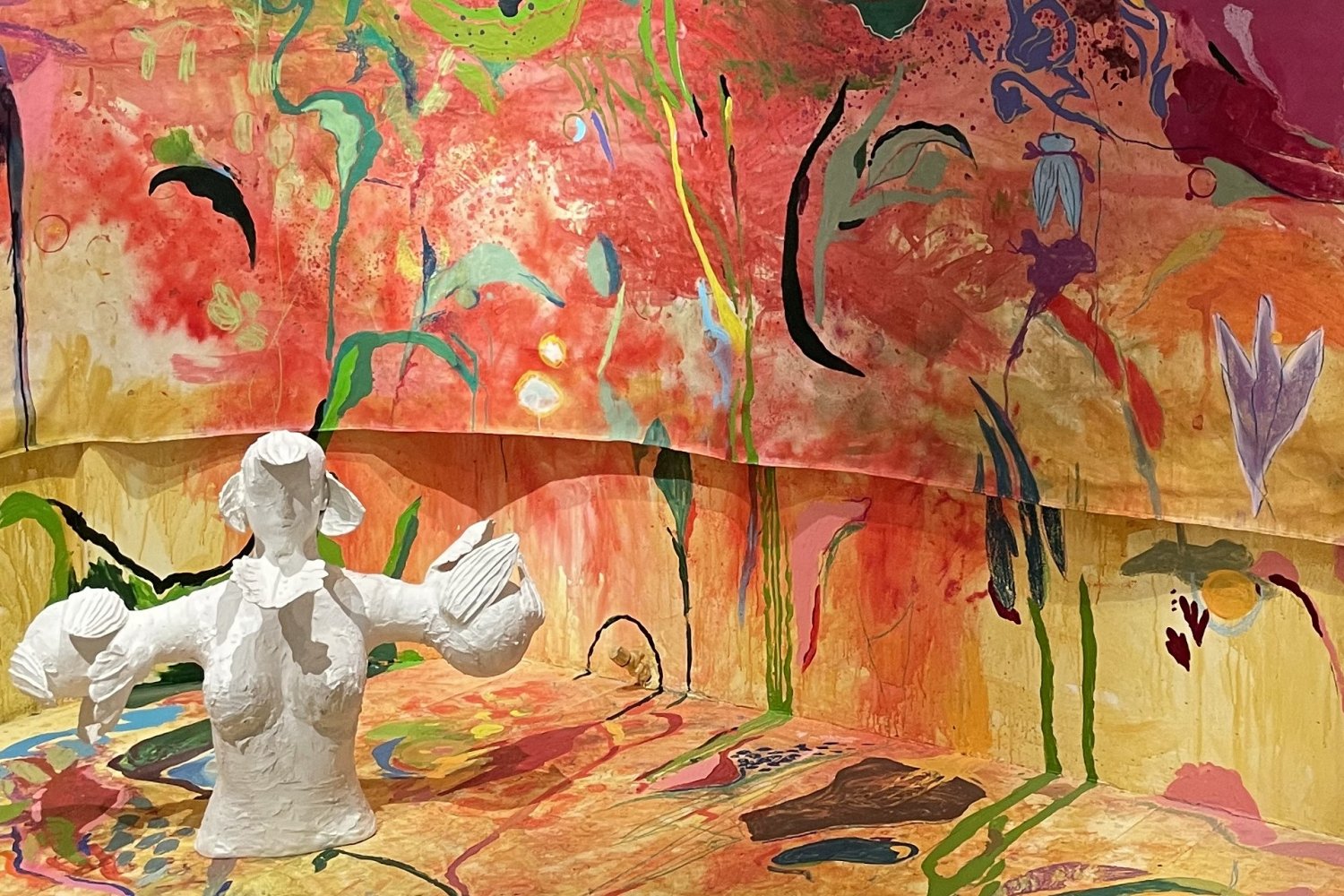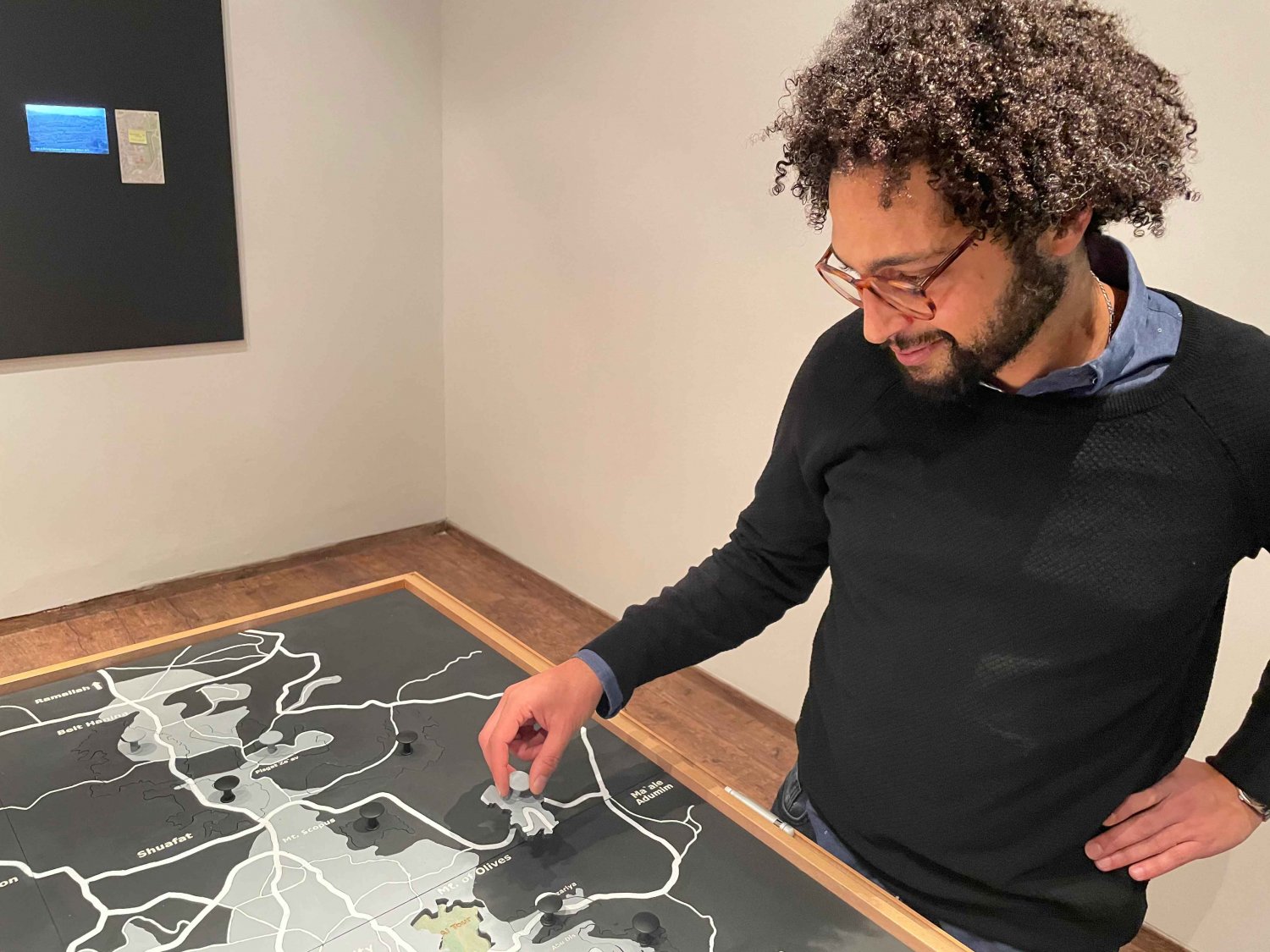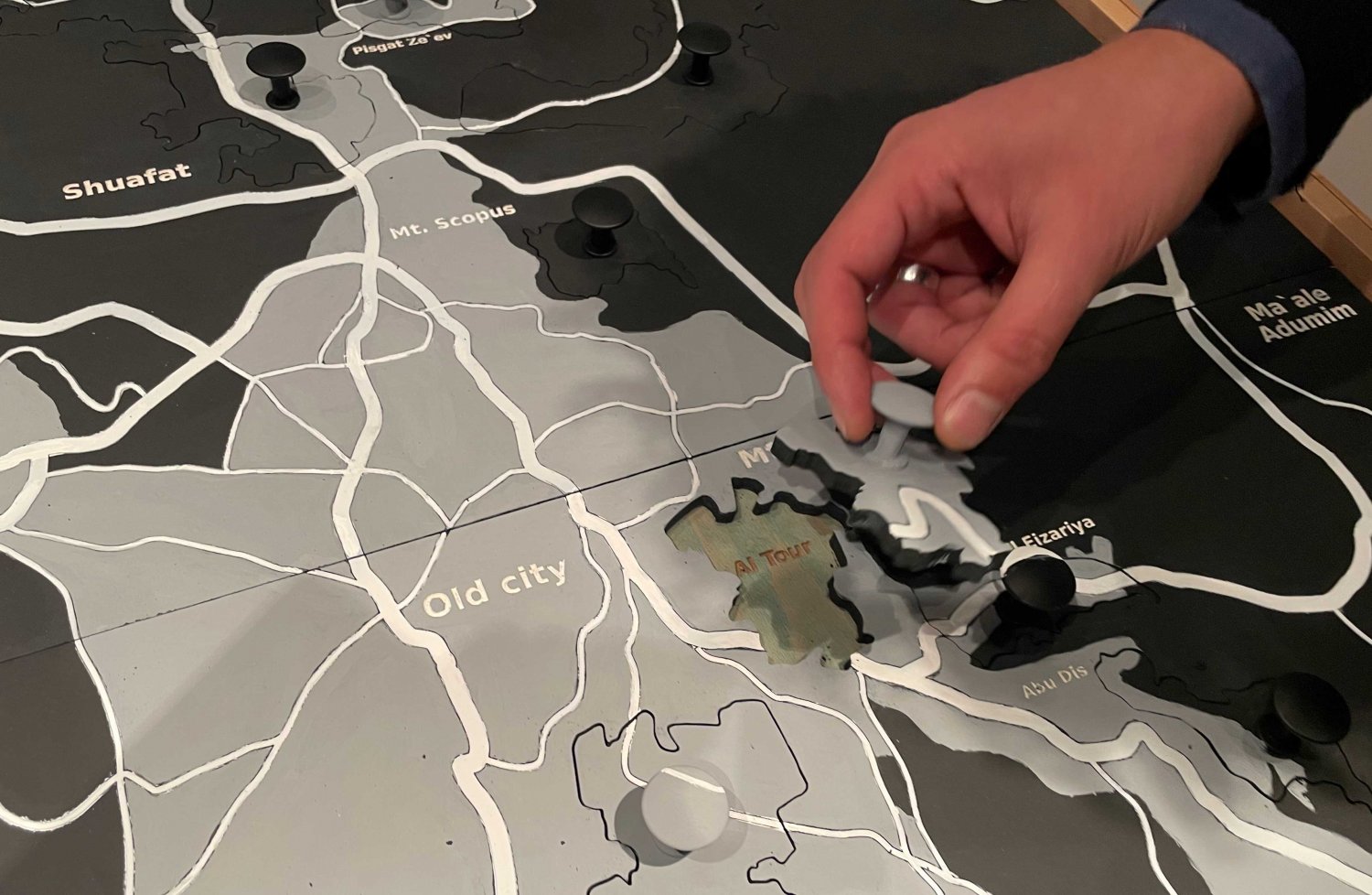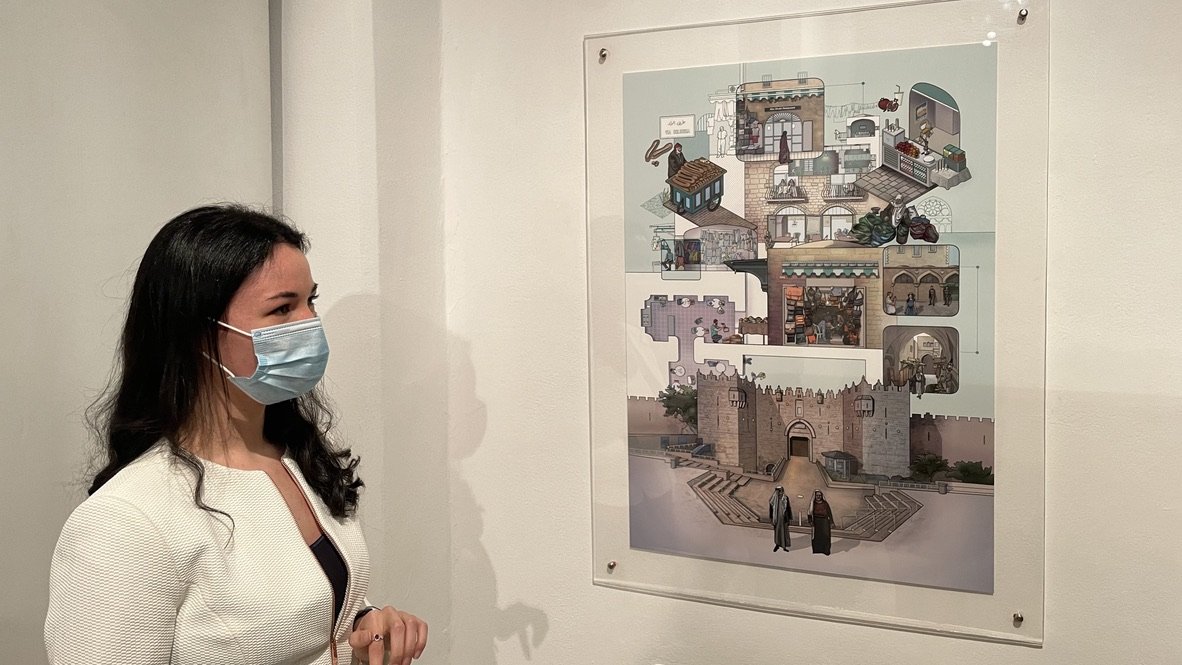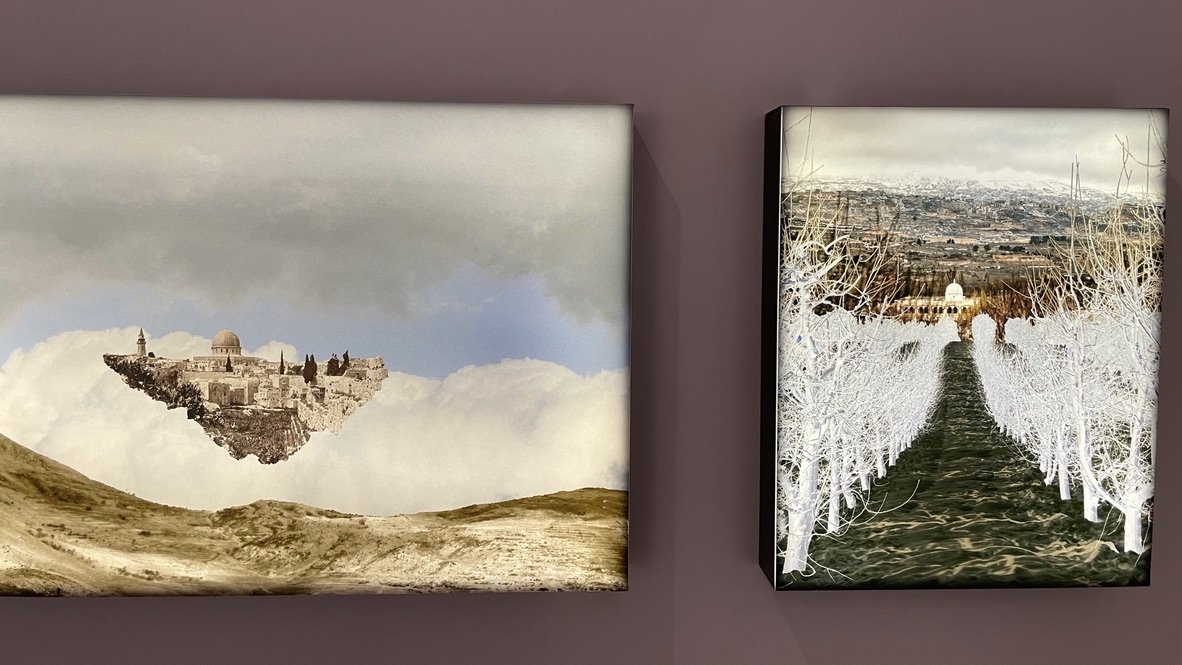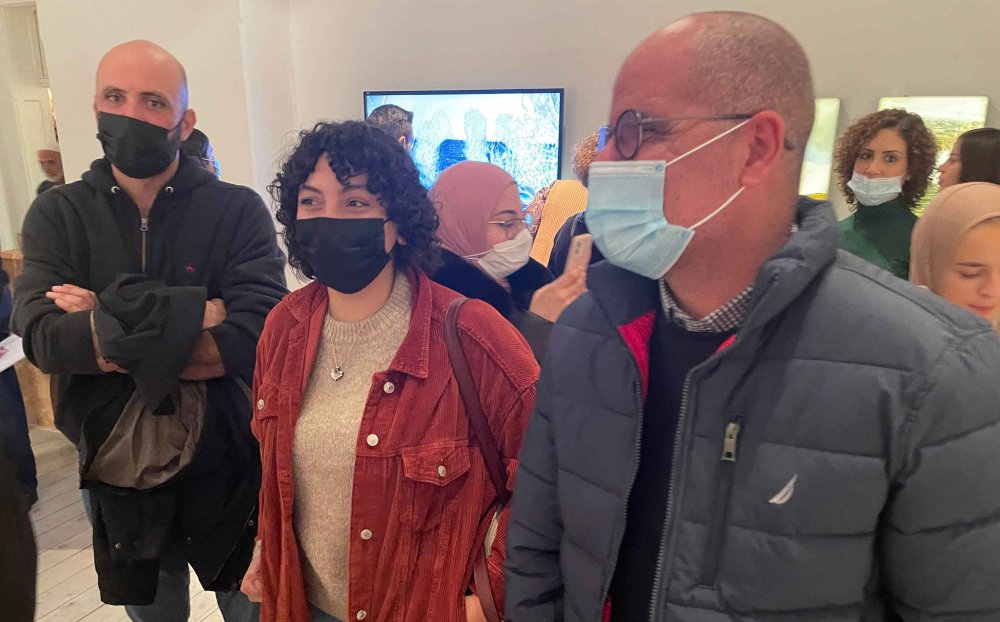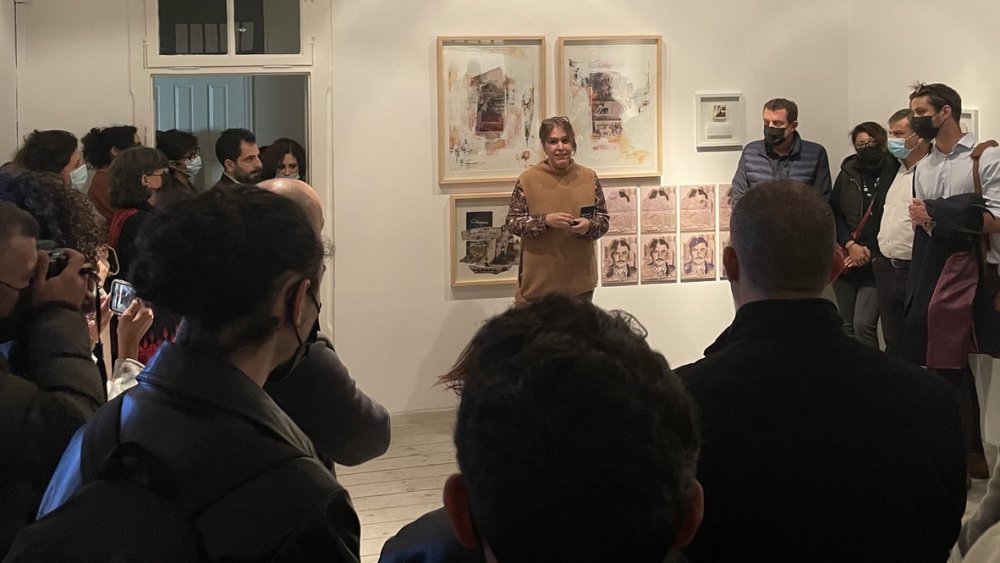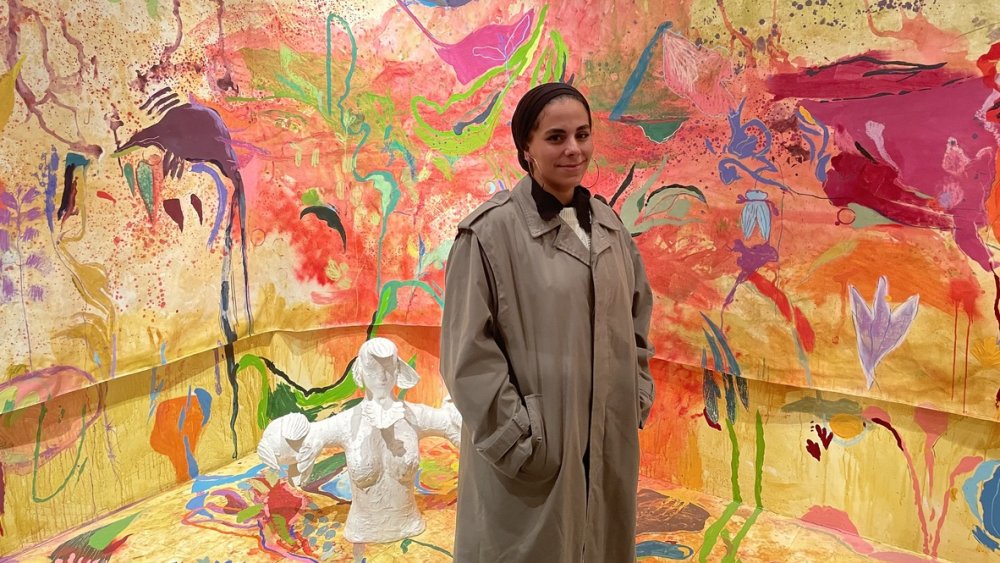On December 1, 2021, the Palestinian Art Court—al-Hoash launched an exhibition, “And We Still Follow Its Path,” focused on personal and collective narratives around Jerusalem. The exhibit title suggests that the relationship Palestinian Jerusalemites have with their city is ever-changing yet stable, as well as the dynamic—both individual and collective—reflections and narratives revolving around it.
Through 10 artworks of painting, sculpture, collage, and video and audio installations, 13 artists from across Palestine produced and proposed narratives that, in the words of the curator, “go beyond the city’s sacredness, and . . . bring about its multilayered stories of personal intimacies, nostalgic imaginaries, and research-driven investigations.”
The 10 artworks are:
- Bisan Abu Eisheh, “Sorry, Your Search for ‘Palestine’ Produced No Results” (art installation)
- Sabreen al-Haj Ahmad, “Jerusalem’s Loose Orchids” (acrylic painting on canvas and a sculpture)
- Assem Attoun, “Night Birds: The Symphony of Jackals” (sound installation)
- Mohammad Hawajri, “Journey with the Winged” (acrylic on canvas)
- Yasmine Mansour, “The City as a Museum” (digital painting)
- Reem and Majd Masri, “Re-narration” (mixed media, collage, and painting)
- Saja Quttaineh, “No One Shall Enter Here, and No One Shall Stay” (photography from al-Nabi Samwil village)
- Shada Safadi and Moath Ghader, “Going by Intuition” (video, digital painting, and digital photo collage)
- Mohammed Saleh and Ghadeer Dajani, “On Condition, You Plant a Garden” (garden art installation—which was not presented on the opening night due to the bad weather)
- Muhammad Shareef, “The Modern Factory for Olive Wood” (wooden sculpture)
The exhibition also invited audience participation by featuring interactive works, thereby creating a dynamic process of “constructing the city’s narratives,” according to the al-Hoash website.
All 10 artworks, varying in themes and media, are thought-provoking. A few are described in greater detail below.

